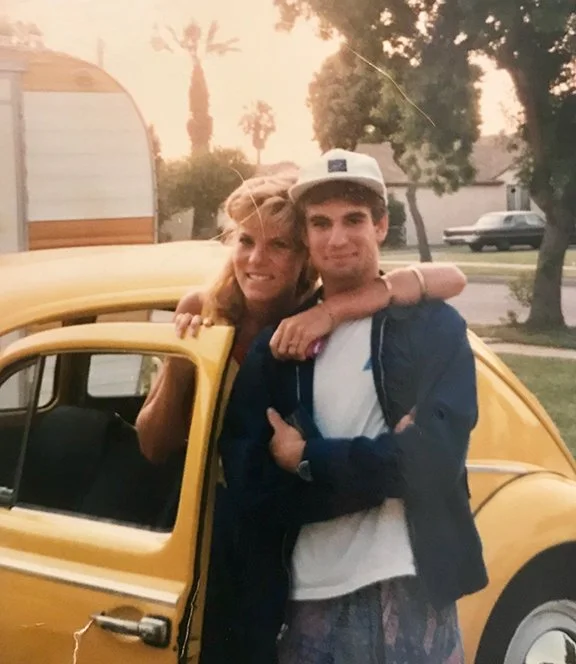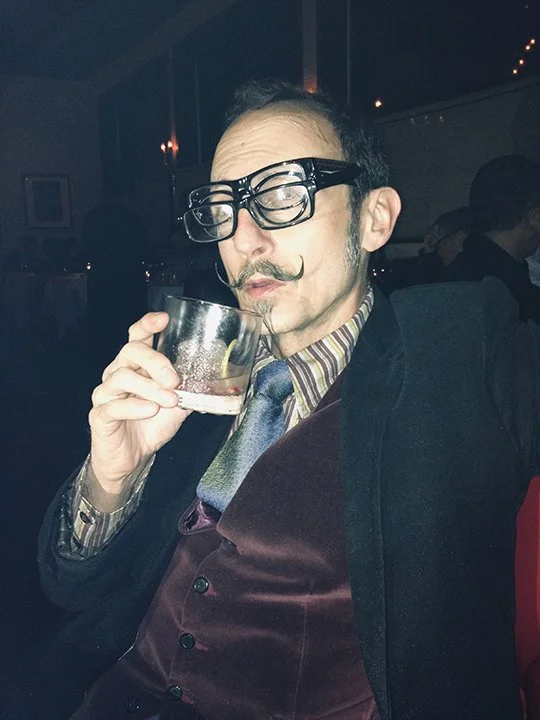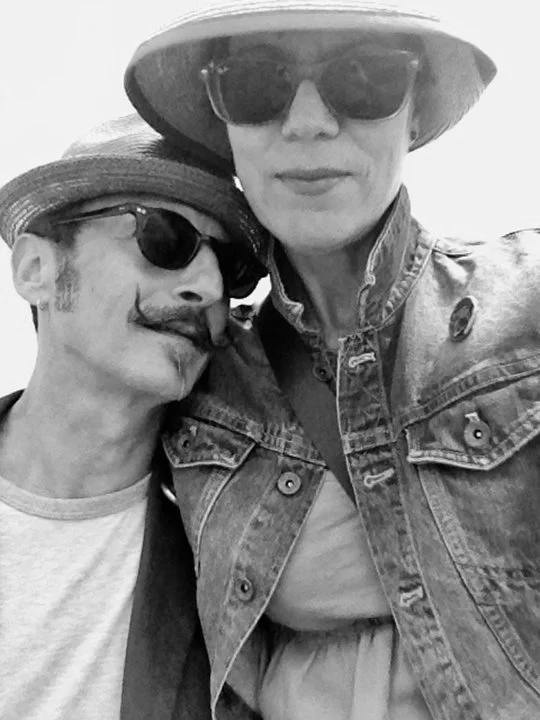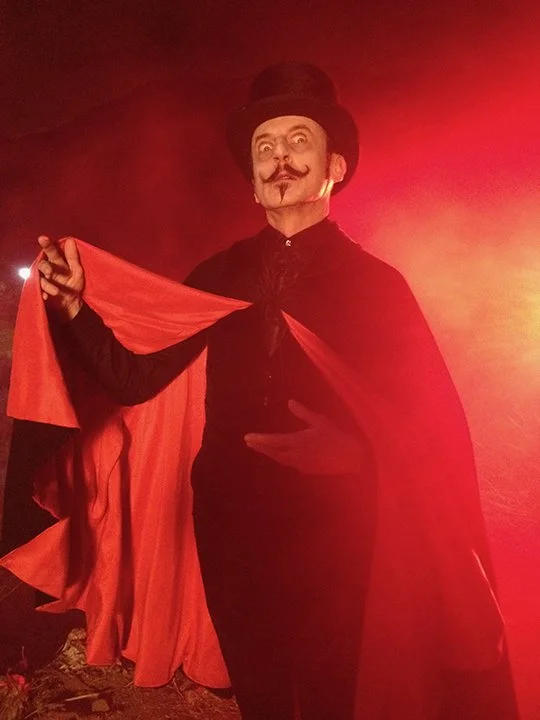My Animus Problem—Part II: Bad Boy
“Who, me?” - Portrait of Dan Piraro by Christy Higgins. 2014
The first time my Animus took possession of me (aka lost my shit entirely) was when I was 16 years old. Things weren’t great at home. My mom was going through a hard time in her marriage to my step-father, and like a Good Girl, I started to carry the emotional baggage that my mother needed to offload. I erroneously thought I could be there for her as a friend and confidant to listen to her complaints and troubles; doing so gave me the intimacy with my mother that I craved. I now know that this created a very unhealthy dynamic whereby I took in her unresolved trauma and became my mother’s surrogate partner, emotionally speaking, and the carrier of the intergenerational trauma coming through my mother’s line. This co-dependent relationship I had with my mom created a large shadow in our relationship, which all came tumbling out of me in an uncontrollable rage one night at home, and many more thereafter.
I had just gotten home from my boyfriend’s house where I had been doing homework and having dinner with his family. When I walked in the front door I was met by my angry mother who accused me of being a selfish brat for being at Mike’s all night rather than being home after school to take care of my younger sister—something I didn’t know she was counting on me to do that day. Considering all of the personal sacrifices I felt I was making to help my mother with her profound unhappiness, it seemed an unfair accusation (one that she often threw at me when I tried to assert any independence from her). Surprising all of us that night, within a fraction of a second, a force of seething rage and contempt rose in me which made me hurl my palm-sweated car keys at her as hard as I could, and then propelled my trembling body out the front door and down the street to the nearest pay phone where I called my boyfriend and asked him to come pick me up (read: rescue me).
Me with my first boyfriend, my first love, Mike Tonietti, a few months before I made that call from the pay phone. 1986
At that moment, I’d finally had enough of the unnamed and unpredictable emotional toxicity that my mother seemed to run on; I felt like I was going crazy trying to live there with her.
I had female friends who sustained me in many ways, but where I found refuge from the stress at home was in my relationship with my boyfriend. This set up a pattern I would play out many times over as an adult in my relationships with men, especially those with a strong need to rescue a damsel in distress.
***
Infatuation casts a powerful spell. The enchantment of Dan Piraro (now my husband) began soon after he and I started talking after a yoga class we had both been attending in Los Angeles for the first nine months of 2013. As any budding romance can demonstrate, the early months of getting to know and falling in love with Dan had a magical glow about them. When we had a date, Dan would come rolling up on his vintage BMW motorcycle (click links throughout for photos), wearing a sparkly silver vintage helmet, sporting his respectable Dalí-esque mustache, and coming to the door all smiles and stories. I couldn’t help but feel in those halcyon days that I had found my dazzling, eccentric, twinkly-eyed raconteur in shining chrome. It didn’t take long for me to ascertain that this was no ordinary fellow, which suited me.
Portrait of Dan Piraro at Tal Ronnen’s Crossroads restaurant in Los Angeles by Christy Higgins. 2013
It was hard not to put Dan on a pedestal in the early days of our yet-unwedded love. He was a terrifically talented, well-known syndicated cartoonist and fine artist; his sharp intellect, wit, humor, and charm were his calling card, all of which I found incredibly sexy and exciting. He was my kind of Bad Boy: he bucked the system, challenged conventions, and made a good living as a creative person despite having no education beyond high school.
We had magnetic chemistry, laughed together a lot, and had terrific fun riding around on the old bike (that is until I got my own motorcycle to ride alongside him), each adorned with sparkly helmets, cruising around LA looking for our vegan eatery of choice in those days. In the evenings we always made a little fire in a backyard chiminea, where we sipped on margaritas and dove into deep, philosophical topics, until we got tired of hearing our voices and would turn our brains off and the TV on to chill with his dog or my cat snoozing somewhere nearby.
“The Devil on my Shoulder” - Self-Portrait on Dan’s motorcycle, a few weeks after our first date. 2013
On most days Dan and I got along beautifully; we worked and played together well. We had an emerging vision of what we wanted our life together to be about; our path ahead was lighted. But when he lit up a cigar—which he chain-smoked at the time—or started ranting about all of the idiots of the world who still believed in Santa Claus (meaning God), or dominated conversation, not giving me much of a chance to share my stories, I put these things in a kind of denial container. I chose to focus on all of the amazing positive qualities I saw in Dan and the blissful ways in which we were connecting, and to ignore the signs that were telling me that I was getting involved with a narcissist.* I wasn’t aware at the time that I, too, was a narcissist (whereas Dan’s flavor of narcissism is more overt and masculine, mine is covert and feminine), so I had necessarily attracted someone to my life who would show me the error of my ways— the bittersweet gift of projection.
We fell in love quickly and lived in our infatuation bubble quite snuggly until it burst after our first big fight, a real narcissistic rage-fest, about three months in. There were to be many more in the coming years before we each started learning to take responsibility for our part in the shadowboxing that was playing out between us.
I don’t remember all the specifics about our first fight, but what I do recall was that it came in white hot and fast, just like that first night I raged at my mother nearly thirty years earlier. The content of my arguments with Dan was different than what I fought with my mother about, but the small spark of disagreement over something relatively banal igniting into an impossible inferno of outraged wills felt familiar. I went home early that night dazed and confused, wondering what the hell I had wandered into with this man and whether or not I wanted to stay.
Our arguments were increasingly about things that were a part of what originally attracted me to Dan but had become the very things at which I began to chafe. His sharp intelligence started occurring to me more and more as sharp criticism and toxic masculinity. I watched him holding court at parties, spouting vitriolic opinions that were not always in alignment with my point of view, and felt divorced from any sensitivity to others who might fall within his judgment. I became a Devil’s advocate quite early in our relationship whereby I was trying to impart the importance of a balance in perspective. The more critical he became of people that I identified with in some way or another (I don’t believe in Santa Claus, but I have a spiritual orientation to life), the more I felt I needed to knock him off his high horse. Not exactly a promising dynamic.
As a social critic in his work as a cartoonist, Dan had honed his knack for pointing out the ridiculousness of the human condition (a true court jester), but my delightful storyteller started to seem more like a black magician who looked down on all the idiots of the world from his high pedestal. When the perceptive filter in my mind switched, he went from being a magical, fun-loving genius who was great at relating with others to a sardonic, negative, critical, entitled, superior white man, who was still somewhat unconsciously patriarchal in his basic worldview. Like a trick of dark magic, all of the positives about Dan had flipped into the negative.
“The Devil in Red,” 2014. Portrait of Dan in character on set of Utopia by Christy Higgins.
With each fight the magic glow of our newfound love was starting to dim; his charm took on a duller sheen and his humor now felt dark, sarcastic, and bleak. This was the shadow of our relationship slowly taking form, becoming a shared filter of perception through which we each started seeing the other. Was my cool, famous, cultural Bad Boy really just a talented asshole in disguise?
It has taken years to unravel the reasons for this trick of perception and the intense friction that it created between us, but I eventually realized this kind of dark shift is common in relationships. At least for those of us attracted to “bad boys.” As I later learned, that type of attraction springs from what modern psychotherapists would call my “father wound,” which I’ll explore in my next post.
***
Next up in The Seekers’ Notebook, “My Animus Problem - Part III: The Father Wound.”
***
NOTES:
*I’m not referring to Narcissistic Personality Disorder, which is a deep psychological pathology. I’m using the term “narcissism” loosely, not clinically. As a layperson, it is my understanding that these traits exist on a continuum and we can see aspects of narcissism in what’s considered “normal” behavior, even if it is dysfunctional and does harm to our relationships.






